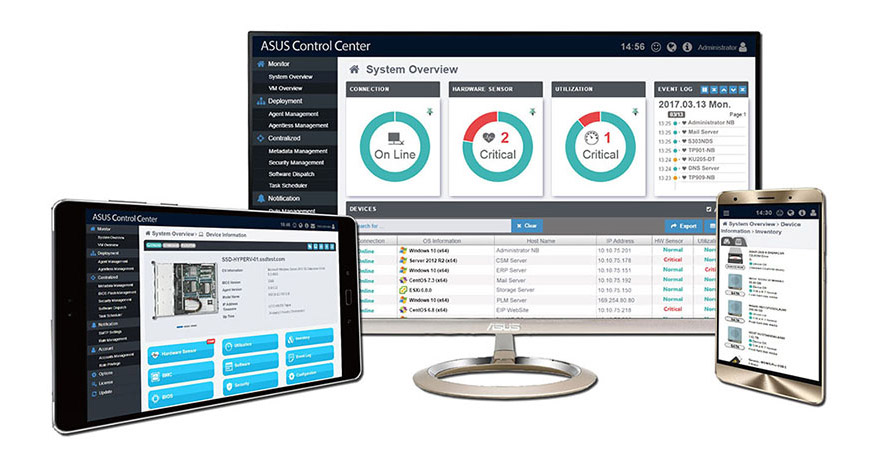Up to
1.5X
General compute
performance gain
The latest 3rd Gen Intel® Xeon® Scalable Processors feature core counts from 8 to 40 cores and an array of frequency and power supports, and deliver up to 40% better performance compared to the previous generations. With built-in security features, this new platform delivers outstanding performance in security including encryption, authentication and data integrity across the breadth of standards that are prevalent in networking, enterprise and the cloud.
Up to
1.5X
General compute
performance gain
Up to
64lanes
PCI Express 4 (per socket)
40cores
Up to 1.42X more cores

PCI Express® (PCIe®) 4.0 delivers 16 GT/s bandwidth, which is double the speed of PCIe 3.0, offering lower power consumption, better lane scalability and backwards compatibility. ASUS RS700-E10 servers are PCIe 4.0 ready to support a diverse array of graphics, storage and networking – enabling flexible scalability for demanding or increasing workloads.
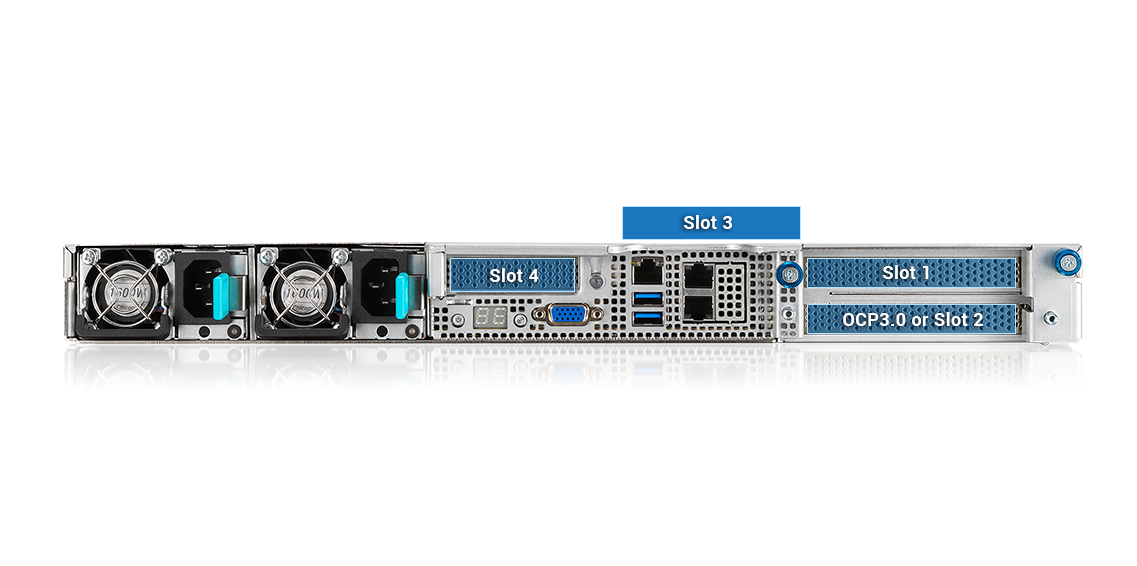


11 x PCIe 4.0 x16 slot, FHFL (x8 or x16 link)
21 x PCIe 4.0 x16 slot, FHFL (x8 or x16 link)
31 x PCIe 4.0 x8 slot (Internal)
41 x PCIe 4.0 slot, LPHL (x16 or x8 link)
ASUS RS700-E10 servers support one dual-slot GPU to securely run different workloads in virtualized environments and are Xilinx Alveo-qualified to provide optimized acceleration for workloads across cloud and on-premises data centers, and for hybrid cloud environments in financial computing, machine learning, computational storage, and data search and analytics.
* FPGA Xilinx verification is available on request.

The new 3rd Gen Intel® Xeon® Scalable Processors excel at providing full features and functionality for both dual-socket and single-socket platforms, but our new servers ASUS is introducing an CPU-balanced architecture to enable secure and optimal CPU-performance efficiency.
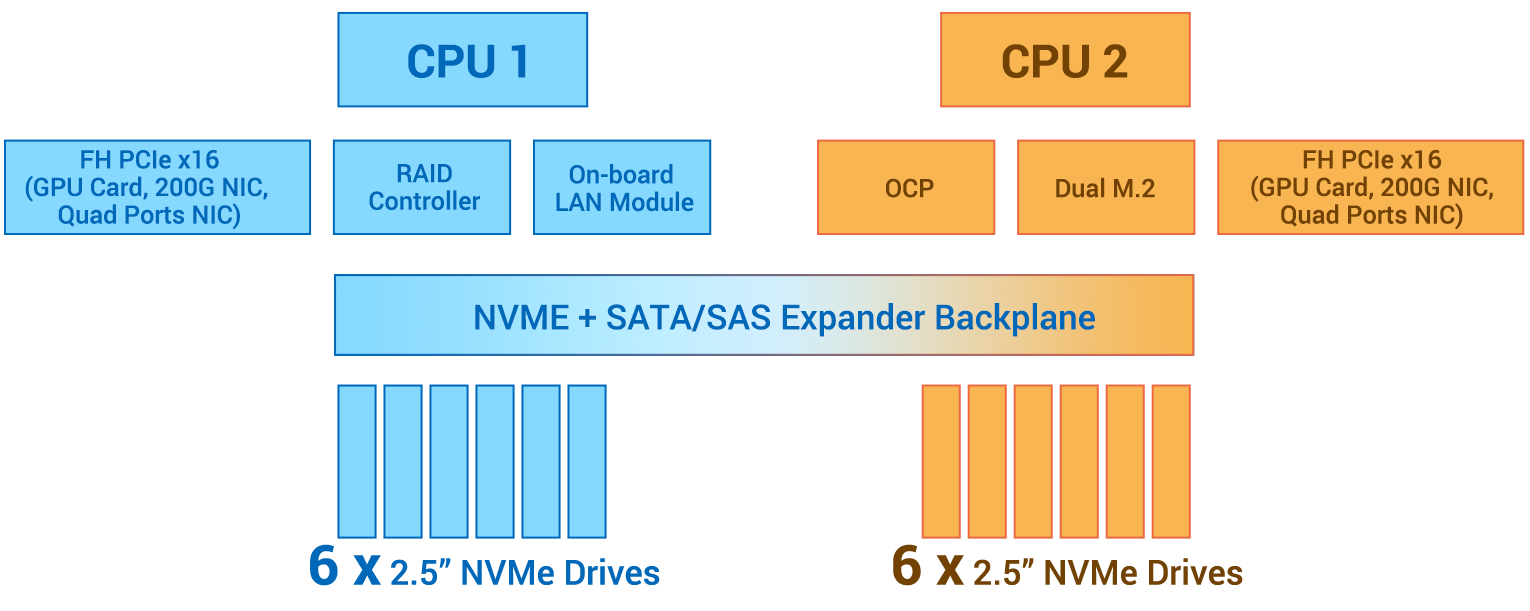
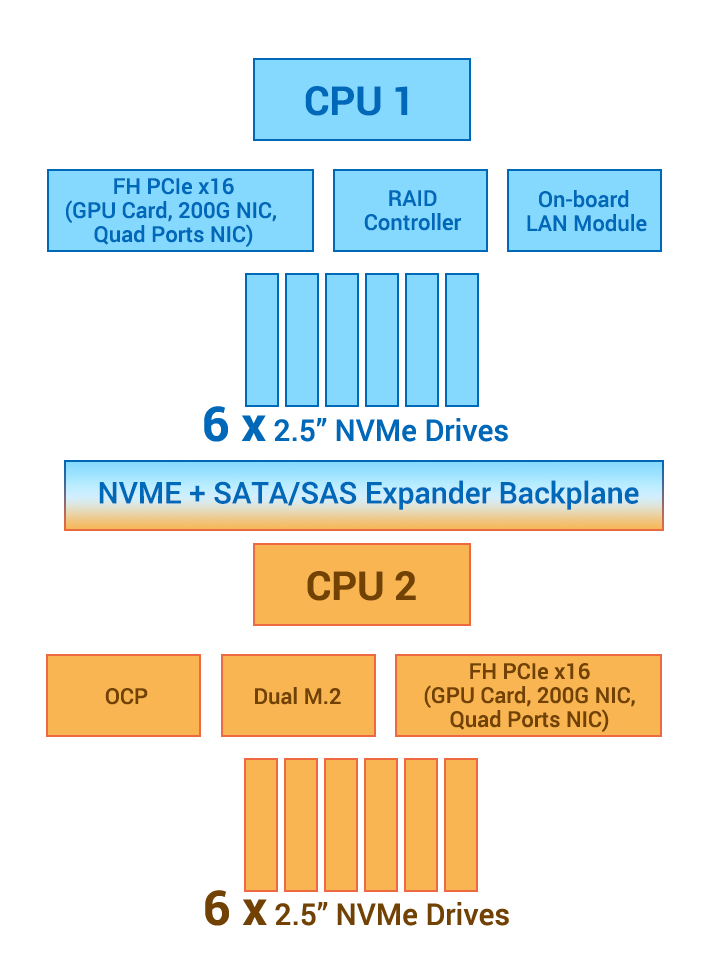
This architecture extends the full bandwidth to either dual- or single-CPU configurations, enabling more computing capability and much-improved overall power efficiency for compute-intensive workloads. This architecture allows customers to take full advantage of bandwidth capabilities of the dual-CPU architecture with a single CPU, while offering the flexibility to upgrade later with the addition of a second CPU.
* Features, specification and design vary by models and configuration.
ASUS RS700-E10 servers offer a flexible, modular design to enable easy scale-up of configurations to meet increasing data-center workloads.

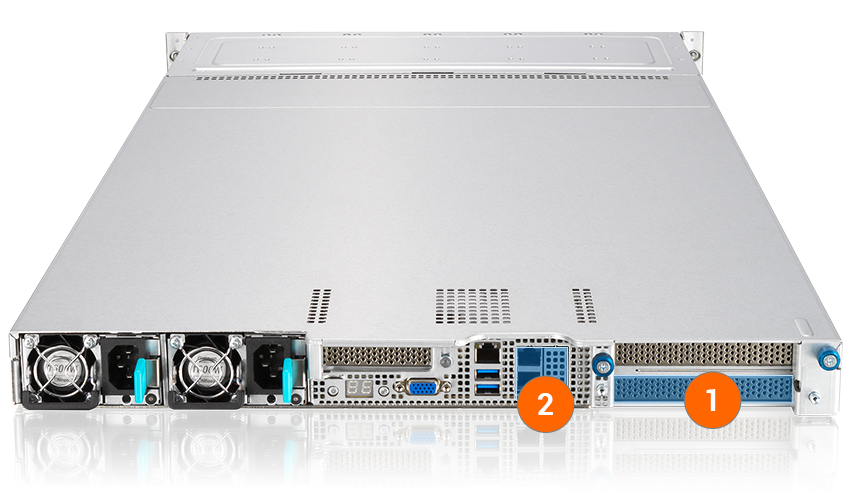
1One PCIe slot in rear panel is replaceable with an OCP 3.0 module for extended network bandwidth.
2The onboard LAN module design allows the default rear-panel LAN port to be replaced with either up to four 1 Gb or two 10 Gb LAN ports, enabling large-scale networking bandwidth for enterprise or data centers.
The system-switchable design enables PCI Express® (PCIe®) lanes to be direction to M.2, PCIe 4.0 slots or NVMe drives as required, maximizing performance and capabilities.

ASUS RS700-E10 servers feature scalable storage solutions to support maximum performance for data center flexibility, and enable industry-standard SAS/SATA/NVMe interfacing through Broadcom Tri-Mode RAID adapters for increased connectivity and security. Up to 12 all-flash NVMe drives on front panel enable extensive storage and high-throughput performance.
RS700-E10 servers offer two combinations of storage drive bays for different workloads:

12 NVMe/SATA
(Model: RS700-E10-RS12U)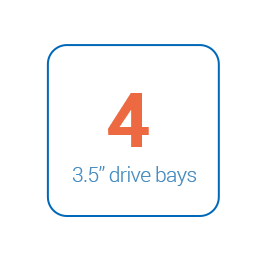
4 NVMe/SATA/SAS*
(Model: RS700-E10-RS4U)* This configuration is required to be with PIKE/RAID cards.
* The optional configuration of supporting up to 8 SATA/SAS with a PIKE card is available for RS12U model.
ASUS RS700-E10 servers integrate PFR FPGA as the platform Root-of-Trust solution for firmware resiliency to prevent from hackers from gaining access to infrastructure. ASUS security solutions are fully compliant with the 2018 National Institute of Standards and Technology (NIST) SP 800 193 specification.
In addition, all RS700-E10 servers also include support Trusted Platform Module 2.0 (TPM 2.0) to secure hardware through integrated cryptographic keys and offer regular firmware update for vulnerabilities.
The TPM-M and TPM SPI difference and supported product list
* Platform Firmware Resilience (PFR) module must be specified at time of purchase and is factory-fitted. It is not for sale separately.

ASUS RS700-E10 servers feature the latest OCP NIC 3.0 card with PCIe 4.0 bandwidth for a faster time-to-market network solution, delivering the speeds of up to 200 Gbps for high bandwidth and low latency. It also features a tool-less, hot-swappable design to simplify installation and serviceability.

ASUS ASMB10-iKVM is the latest server-management solution from ASUS, built upon the ASPEED 2600 chipset running on the latest AMI MegaRAC SP-X. The module provides various interfaces to enable out-of-band server management through WebGUI, Intelligent Platform Management Interface (IPMI) and Redfish® API.
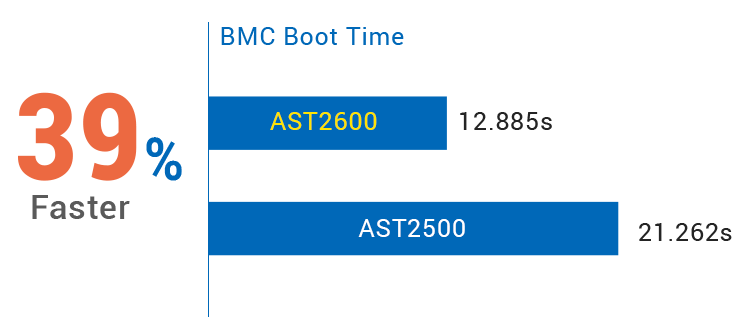
ASUS Control Center (ACC) is a centralized and integrated IT-management platform for monitoring and controlling ASUS servers, workstations and mini PCs. ACC enables remote BIOS updates, monitoring of multiple systems via mobile devices, and one-click software updates and dispatching, allowing easier server management for any IT infrastructure.
